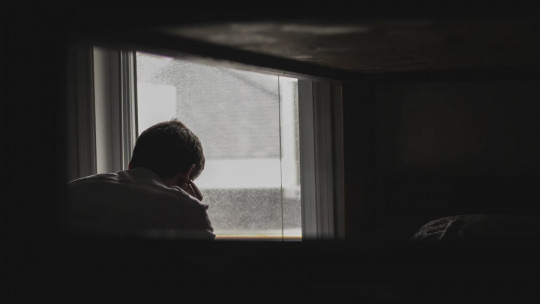
If we think of depression as one of the most serious and frequent mental disorders in the world, we will realize that it is a problem that must be combated.
And for this, part of the solution is to analyze the problem and try to unravel its causes. In this sense, there have been many authors who throughout history have tried to generate hypotheses and theories regarding the origin of depression.
On a psychological level, One of the best known is Lewinsohn’s behavioral theory of depression which we are going to comment on in the following lines.
Depression: a brief description of the problem
In order to understand Lewinsohn’s behavioral theory of depression, it is necessary to first understand the type of problem that this author’s theory aims to explain: depression.
It is understood by depression one of the main mood disorders (and one of the most frequent mental problems in the world) which is characterized by the continued existence for most of the day and most days of at least two weeks of a sad mood and/or presence of anhedonia (loss of the ability to feel pleasure and satisfaction), in addition to other symptoms such as hopelessness, passivity, sleep problems, loss of appetite and weight, loss of sexual libido or ideas of death and suicide.
It is also common for there to be clinophilia or a tendency to remain bedridden and inactive. The person is usually unable to see himself capable of getting out of said situation often with constant aversive rumination and viewing oneself, the world, and the future as hostile and negative.
depression is a disorder that generates great discomfort and is deeply disabling in all fields. At a socio-relational level, it is common for depressed people to progressively isolate themselves, and although initially the environment tends to show support and understanding, in the long run there may be a distancing from the person. In work and academic terms, a great loss of performance is perceived.
There are many theories that attempt to provide an explanation for the causes that can cause depression, among which is Lewinsohn’s behavioral theory of depression. Let’s see what it consists of.
Lewinsohn’s behavioral theory of depression
Lewinsohn’s behavioral theory of depression is one of the main theories within the field of psychology that aims to provide an explanation as to why depression arises. This theory is part of the behaviorist current focusing on explaining depression based on association and conditioning processes linked to the performance of behaviors and the consequences of said actions.
Specifically, Lewinsohn’s behavioral theory of depression states that the main cause of depression is the existence of a lack of reinforcement of the behaviors issued by the subject in most aspects of his life.
This implies that the actions carried out by the person They do not provide gratification or satisfaction in most areas, something that in the long run will cause you to carry out fewer and fewer behaviors. This will have the consequence that little by little the subject will become more and more passive and over time the majority of symptoms of depression will appear.
The fact of not contingently seeing that the actions carried out involve or have as a consequence anything positive that encourages them to repeat them, especially in contexts in which the person would expect to obtain them, will cause the level of activity to decline. In addition to that, At a cognitive level, the person may begin to feel emotions such as guilt, low self-esteem and negative thoughts derived from attributing said lack of reinforcement to internal and stable elements.
The explanation of the causes
The reasons why this reinforcement may not occur can be multiple, and this theory considers that they can be both environmental and dispositional.
On the one hand we can find that the environment or environment that surrounds the subject is not sufficiently reinforcing per se (for example a cold or even hostile environment with the subject’s actions), that the person does not have sufficient skills to obtain them or has difficulties to do so (especially at a social level), or that the subject’s perception of what It is reinforcing and may be biased.
Likewise, depression would not start from scratch: as Lewinsohn proposed in a reformulation of his original theory, at the beginning of depressions There is usually a triggering event that causes the person’s usual behavior to change and from which a decrease in reinforcement (and subsequently in the subject’s activity) begins.
Negative expectations and negative feelings towards oneself would also appear, generating deep discomfort and affecting the various areas of life. A sequence of causes would be established that would end up leading to decreasing activity and reinforcement and the emergence of depression.
Risk and protection factors
Lewinsohn’s theory also analyzes the existence of some factors that can facilitate or hinder the appearance of depression: risk factors and protective factors.
In the first case, the fact of finding oneself in aversive situations with great frequency a precarious socio-economic situation, acting as a caregiver (especially in the case of young children), having had depression before, having low self-esteem and being a woman are considered factors that can increase the probability of suffering from depression.
On the other hand, frequently exposing oneself to positive situations, perceiving oneself as competent, having high self-esteem and having a good social support network are protective factors, making it difficult for depression to arise.
Why does the depressive state persist?
In addition to offering an explanatory framework that can guide us when establishing why depression appears, Lewinsohn’s theory also aims to explain the mechanisms by which it is maintained over time
Also from a behavioral perspective, the author establishes that in the first moments after the onset of depression it is common for those who suffer from it to receive understanding and attention from the environment and the environment, so that their state is reinforced by assuming attention. an improvement of their situation.
However, this implies that the discomfort is enhanced by transforming the subject’s behaviors into something that generates positive stimulation (the attention received), which remains valid.
On the other hand, when the environment stops giving attention to the subject, he or she begins to receive less positive stimulation, something that on the other hand favors the maintenance of depressive behavior since the lack of reinforcement of the behavior is what motivated the beginning of the depressive behavior. depression.








